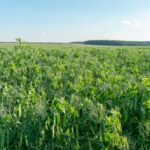Dairy farming is a vital part of South Africa’s agricultural industry, providing milk, cheese, and other dairy products essential to the local economy and global markets. However, running a successful dairy operation requires careful planning and management. Many farmers encounter challenges that can hinder productivity and profitability. Here are 10 common mistakes in dairy farming and practical advice to avoid them.
1. Poor Calf Management
Mistake: Neglecting calves during their early stages leads to poor growth, health issues, and reduced productivity later in life.
Solution: Provide high-quality colostrum within the first six hours of birth to boost immunity. Maintain a clean, warm, and dry environment for calves and feed them milk replacer or whole milk until they transition to solid feed.
2. Inadequate Nutrition
Mistake: Feeding cows an unbalanced diet can result in low milk yields and poor health.
Solution: Ensure cows have access to high-quality forage, silage, and concentrate feeds. Balance rations with essential nutrients like proteins, energy, vitamins, and minerals. Consult a nutritionist to develop feed plans tailored to your herd.
3. Improper Milking Practices
Mistake: Using unsanitary or improper milking techniques increases the risk of mastitis and reduces milk quality.
Solution: Train workers in proper milking procedures, including cleaning udders before and after milking. Use sanitized equipment and maintain consistent milking schedules to reduce stress on cows.
4. Poor Herd Health Management
Mistake: Failing to monitor cow health regularly can lead to the spread of diseases and increased mortality.
Solution: Implement a comprehensive herd health plan, including vaccinations, parasite control, and regular veterinary checkups. Monitor cows for signs of illness, such as changes in appetite, milk production, or behavior.
5. Neglecting Housing and Comfort
Mistake: Overcrowded or poorly designed housing causes stress and reduces milk production.
Solution: Provide clean, spacious housing with proper ventilation and comfortable bedding. Ensure cows have access to shaded areas or cooling systems during hot weather to prevent heat stress.
6. Failure to Record and Analyze Data
Mistake: Many farmers fail to track key metrics like milk yields, feed consumption, and reproductive performance.
Solution: Keep detailed records of herd performance, health treatments, and financial data. Use this information to identify inefficiencies and make data-driven decisions to improve productivity.
7. Overlooking Reproductive Management
Mistake: Inconsistent breeding practices result in longer calving intervals and reduced herd efficiency.
Solution: Monitor cows for heat cycles and use artificial insemination (AI) or natural breeding at the optimal time. Maintain a clear breeding schedule and work with a reproductive specialist to ensure success.
8. Ignoring Water Quality and Availability
Mistake: Providing insufficient or poor-quality water affects milk production and overall health.
Solution: Ensure cows have access to clean, fresh water at all times. Test water sources regularly for contaminants and maintain drinkers to prevent algae growth and debris buildup.
9. Lack of Financial Planning
Mistake: Many farmers underestimate the costs of feed, veterinary care, and equipment maintenance, leading to financial strain.
Solution: Create a detailed budget that accounts for fixed and variable costs. Monitor expenses and revenues regularly and adjust your management practices to maintain profitability.
10. Neglecting Farm Biosecurity
Mistake: Allowing unrestricted access to the farm increases the risk of introducing diseases.
Solution: Restrict access to essential personnel and implement biosecurity measures, such as disinfecting footwear and vehicles entering the farm. Quarantine new animals before introducing them to the herd.
Final Tips for Success
- Focus on Genetics: Invest in high-quality breeding stock to improve milk production and disease resistance.
- Embrace Technology: Use tools like automatic milking systems, herd management software, and wearable health monitors to optimize operations.
- Train Farmworkers: Regularly train employees on best practices for feeding, milking, and animal care.
- Plan for Market Fluctuations: Diversify income sources by exploring value-added products like cheese or yogurt to buffer against milk price volatility.
Dairy farming in South Africa presents immense opportunities, but it also comes with challenges. By avoiding these common mistakes and implementing best practices, farmers can enhance milk production, maintain herd health, and ensure the sustainability of their operations. Success in dairy farming is rooted in attention to detail, continuous learning, and a commitment to high standards of care and management.
Join 'Farmers Mag' WhatsApp Channel
Get the latest Farming news and tips delivered straight to your WhatsApp
CLICK HERE TO JOIN






